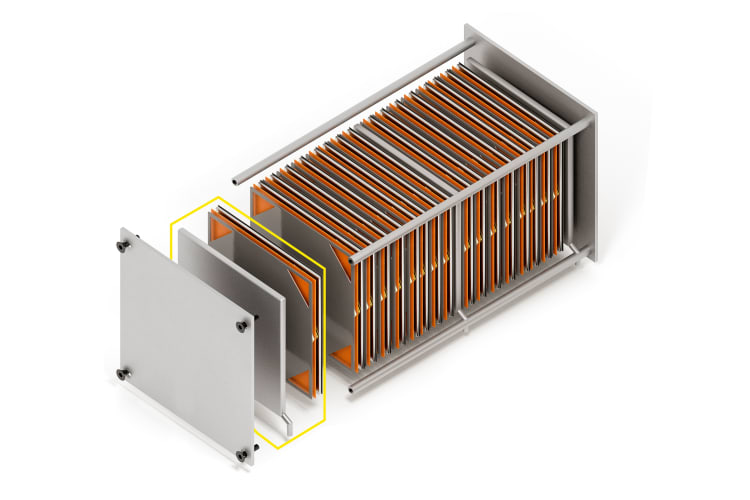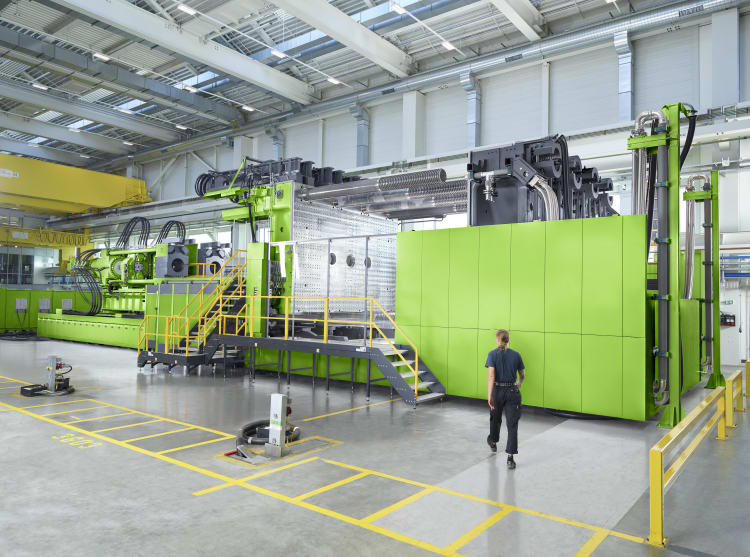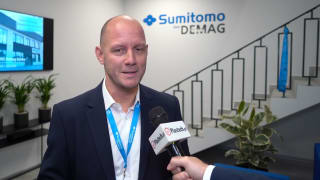Fuel cells drive innovation
Alternative drive technologies are also opening up new potential for the injection moulding industry. "Hydrogen technology is currently being promoted particularly strongly in Europe, especially in the truck sector," as Fischer reports. "The Cellcentric joint venture sees Daimler Truck and the Volvo Group bundle their experience in the development and production of fuel cell systems, and they have chosen Engel as one of their technology suppliers."
In particular, the expertise which Engel has in processing elastomers and liquid silicone rubber (LSR) is crucial here. Fuel cells require many seals, some of which are moulded directly onto metal or plastic components. On top of this, there are cable lead-throughs, which are made of LSR.
The bipolar plates, of which several hundred are needed for each fuel cell, are made of metal, but Fischer is convinced that this could change in the long term. "We are already developing injection moulding solutions for thermoplastic-based bipolar plates. The challenge is the sheet thickness of only a few tenths of a millimetre; we are combining thin-wall technologies with injection compression moulding for this."
Thermoplastics are also increasingly replacing steel and aluminium sheet for battery housings and trays in electric, hybrid and fuel cell vehicles. For example, Envalior – which emerged from DSM Engineering Materials and the High Performance Materials business unit of Lanxess – is developing an innovative battery tray made of polyamide with a high glass fibre content. The wall thickness is less than 7 mm with a single shot weight of 60 kg. "The challenge is for the plastic design to be able to reliably absorb the high loads," as Fischer explains. "On top of this, the large-volume part and the very high shot weight require a particularly large injection moulding machine. We are planning on an Engel duo machine with a clamping force of 8000 tonnes."

Fuel cells are made up of several hundred bipolar plates, which require innumerable seals. (Picture: iStock)
Injection moulding machines of 10,000 tonnes and more
While Engel duo injection moulding machines have been available with clamping forces of up to 5500 tonnes as standard machines for a long time, Engel has now extended the series upwards for new applications in the mobility sector and other industries. Besides parts with a particularly large surface area and volume, these new mega machines with their extremely large mould mounting spaces enable even more extensive process integration – for example in the glazing sector.
"Clamping forces of more than 10,000 tonnes and shot weights of several hundred kilograms are already technically feasible today," says Stefan Engleder providing an outlook and underlining the commitment which Engel has to building a new dimension of large machines. "We have created assembly capacity for this at both the large machine plant in St. Valentin, Austria, and in Shanghai, China. Around the world, we are helping our customers to solve the new mobility challenges."

New mobility applications sometimes require particularly large injection moulding machines. Engel builds mega machines with clamping forces of more than 10,000 tonnes. (Picture: Engel)




